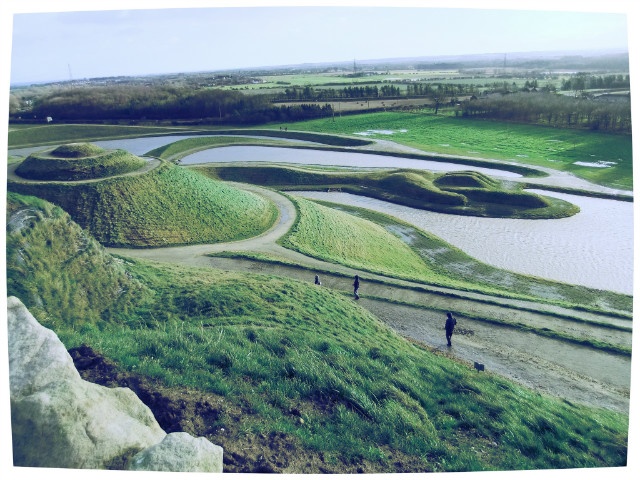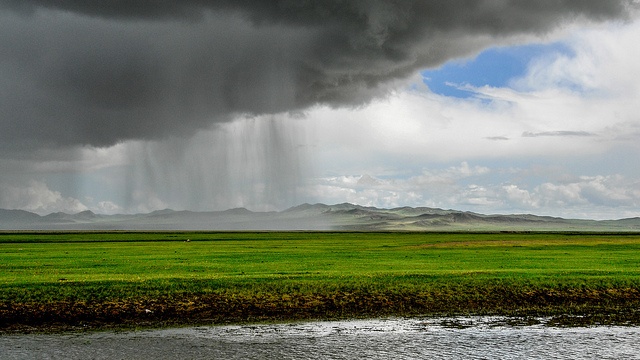There’s no way around it—constructing a mine requires changing the landscape. But continued innovations in the reclamation process are returning sites to pristine conditions.
Mining reclamation techniques have seen dramatic improvement in recent years, thanks to creative new methods and technologies that are pushing the process beyond simple restoration. Closed mines all over the world are now being used for research, public parks, forests, and even farmlands. Here are five such success stories that demonstrate the changing practices and potential behind mine site reclamation.
Crooked Run Quarry, West Virginia

Due to sinkholes, the Crooked Run Stream running through the limestone quarry very rarely had a continuous flow through the watershed. The operators of Laurel Aggregates, Inc. invested substantial time and money to locate, fill, and seal the sinkholes, resulting in a steady and consistent rush of water.
Laurel Aggregates went above and beyond the regulatory requirements by hauling in outside material to restore the land to its original contour, and established a verdant vegetative cover that is more productive today than it was prior to the mining operation. At the land owner’s request, Laurel Aggregates left the ponds and a portion of the operating site for livestock handling and hay storage.
Northumberlandia, Newcastle, England

Completed in 2012, Northumberlandia sits at the intersection of a public land project and a mining operation. The landform sculpture sits in the center of a 46-acre community park, adjacent to the still-operational Sutton Surface Mine. As part of the reclamation, landscape architect Charles Jencks was commissioned to design Northumberlandia in the shape of a reclining woman — the structure was built with materials excavated from the nearby mine.
The park is open to the public free of charge, and cost more than double the average price of mine restoration (£3 million). Northumberlandia will continue to evolve with the changing seasons and natural transformation of the land.
The Ereen Mine, Mongolia

The Ereen Mine, owned and operated by Peabody Energy, posed significant challenges due to its extreme isolation. Restoration equipment and materials had to be shipped in from the United States over the course of five months, and the 60-person crew had to spend much of its time on the project campsite. The $1 million projected transformed the 44-acre mine site into pristine grasslands, currently used for traditional livestock grazing by Mongolian shepherds.
Easy access to potable drinking water had to be established in an area that previously lacked the necessary infrastructure, and a surface pond for local herders’ animals was also incorporated. With the backing of materials and technical knowledge from Peabody, two local families have agreed to manage and maintain the site, which is producing foliage at four times the rate of the surrounding land.
New Bern Quarry, North Carolina
Mining took place on over 1,000 acres in the limestone quarry owned by Martin Marietta Aggregates, opened in 1958 and closed in 1996. The average depth of the mine was 60 feet, calling for extensive reclamation work that took place in three stages over the course of ten years. Martin Marietta Aggregates exceeded the requirement of the North Carolina Mining Act of 1971 by flattening the slope by more than what the law called for. In doing so, the company prevented sediment runoff which helped the establishment of vegetation, while widening the area for wildlife habitat.
Martin Marietta also conducted grading work in such a way as to create wetland with a variety of water depths for fish of all kinds. The work formed miles of shoreline essential for amphibians and native birds, in addition to developing islands that provide ideal nesting habitats for many species of fowl. The site continues to thrive as a vibrant and diverse habitat.
Huehnerwasser Catchment at Welzow-South Coal Mine, Germany
An example of the unique opportunities restoration projects provide, the Huehnerwasser Catchment is a restored open pit mine owned by the Swedish company Vattenfall Europe Mining AG. After depositing regional sediment, completing grading ,and establishing a local groundwater body on top of a clay layer, the site was fenced off and left untouched. No active steps were taken by the reclamation team to encourage re-vegetation.
This presents scientists and researchers, from soil ecologists to botanists, the rare chance to observe a developing ecosystem across multiple levels. The project is set to run for 12 years and could help inform future restoration programs.
Mining is, without question, a vital industry for continued human prosperity. If we didn’t mine, we wouldn’t have any of the advancements in modern society. However, this doesn’t mean that mining has to leave a lasting footprint. With reclamation practices after a mine has served its purpose and proactive solutions during a mine’s lifetime, mining can be environmentally benign. To that end, Midwest Industrial Supply, Inc. offers multiple solutions for keeping mines as environmentally friendly as possible while still in operation. With the proper tools and planning, mining can boost the economy, provide us with necessary resources, and remain environmentally friendly.


